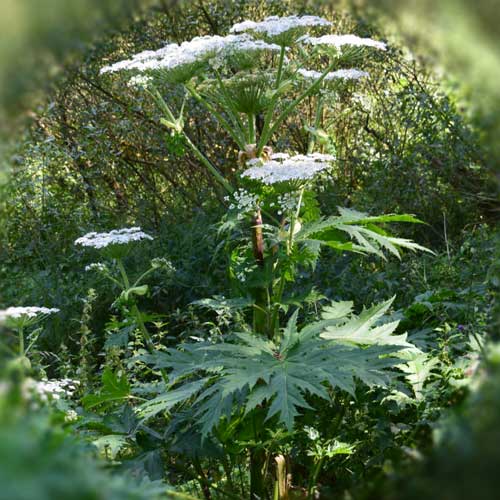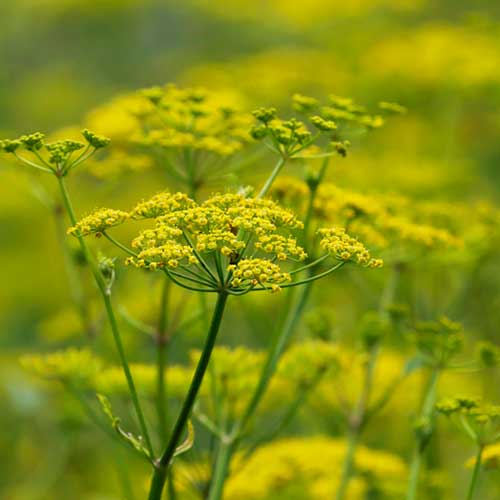Giant Hogweed and Wild Parsnip
Giant Hogweed and Wild Parsnip
Giant Hogweed
Giant hogweed is an invasive perennial plant that grows to 4.5 metres tall in Ontario. It has:
- Spiked leaves with a jagged appearance that can grow up to one metre wide
- Small white flowers that appear in mid-June and form umbrella-shaped clusters up to one metre wide
- Thick stems with dark reddish-purple spots and coarse white hair

Wild Parsnip
Wild Parsnip is an invasive short-lived perennial plant that grows to 1.5 metres tall. It has:
- Compound leaves arranged in pairs, with sharply toothed leaflets that are shaped like a mitten
- Yellowish green flowers that form umbrella-shaped clusters 10 to 20 centimetres wide
- A single green stem that is two to five centimetres thick and smooth with a few hairs

Health concerns
- Giant Hogweed and Wild Parsnip produce a clear watery sap that contains toxic compounds called furanocoumarins. These compounds can cause serious rashes, burns or blisters to skin exposed to the sap and then sunlight. Painful blisters occur within 48 hours and purplish scars may form that last for many years.
- It has not been confirmed if eye contact with the sap can cause temporary or permanent blindness.
- A person can be exposed to the sap by touching or brushing up against the plants, or by handling clothing or pets that have been in contact with them.
Protect yourself from exposure
- Learn to identify these plants and if you see them, do not touch! Teach children to stay away from them.
- Stay on trails, especially in areas known to have Giant Hogweed or Wild Parsnip.
- Take action to control these plants if found on your property. Early detection of invasive plants can make it easier and less costly to remove or control them and prevent them from spreading further.
What to do if you've come in contact
- Wash the sap off your skin with soap and cold water
- Do not touch your eyes
- Stay out of the sun for at least 48 hours after contact to avoid a skin reaction
- See your health care provider
Where to find Giant Hogweed and Wild Parsnip
- Giant Hogweed and Wild Parsnip are becoming more common in southern Ontario and Halton region.
- Giant Hogweed is most often found near water. Both plants can be found in meadows and along roadsides, ditches, and streams.
- In Halton region, Giant Hogweed is commonly found along Sixteen Mile Creek and sections of Bronte Creek, especially south of Hwy 407. Wild Parsnip is abundant in many naturalized areas.
Look-alike plants
Many plants can easily be mistaken for Giant Hogweed and Wild Parsnip, including Queen Anne’s Lace, Angelica and Cow Parsnip.
How they spread
- The seeds of these plants are carried to new locations in a variety of ways including wind, water, vehicles, and landscape equipment.
- On average, a Giant Hogweed plant produces 10,000 seeds, and a Wild Parsnip plant produces 975 seeds.
If you see Giant Hogweed or Wild Parsnip
- Do not touch! Keep children and pets away from the area.
- You can call the Invading Species Hotline at 1-800-563-7711 or visit EDDMapS (external link) to report a sighting. You will be asked to send in photos for identification.

